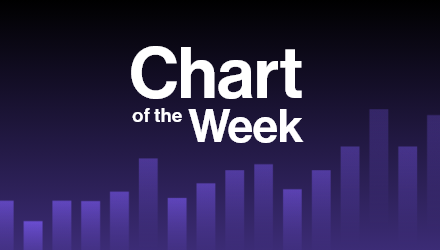Advisors are looking to investment-grade corporate bond strategies to obtain income at the start of 2023. During a January webcast hosted by VettaFi with experts from Innovator ETFs, we asked advisors, “What is your go-to investment style for yields that exceed government bonds?” The most popular response was investment-grade corporate bonds (48%), followed by high yield bonds (20%), preferreds (13%), and REITs (12%). Senior loans were the least popular of the options made available, with just 7% of the results.

Investment-grade corporate bond ETFs are primarily index-based and own bonds rated BBB or above from hundreds of issuers, such as Apple, AT&T, Bank of America, and JPMorgan. Unlike core bond ETFs, these funds also do not have exposure to Treasuries or other U.S. government-backed bonds. The yields are higher in exchange for the elevated credit risk. However, the credit risk for an investment-grade bond ETF is less than that of investing in high yield bonds.
The Vanguard Intermediate-Term Corporate Bond ETF (VCIT) is the largest of these ETFs, with $42 billion in assets. VCIT sports a 30-day SEC yield of 5.2%, has an average duration of 6.2 years, and has assets largely split between BBB- (55%) and A-rated (41%) bonds. The fund’s 0.04% expense ratio adds to its appeal. For perspective, the Vanguard Intermediate-Term Treasury ETF (VGIT) offers a 30-day SEC yield of 4.0% and has a duration of 5.2 years.
The Vanguard Short-Term Corporate Bond ETF (VCSH) is modestly smaller than VCIT, with $41 billion in assets. VCIT provides a 30-day SEC yield of 5.0%, has an average duration of 2.7 years, and has assets largely split between BBB- (45%) and A-rated (48%) bonds. The fund also has a 0.04% expense ratio.
The less interest rate-sensitive VCSH outperformed its Vanguard sibling in 2022 as bond yields climbed higher. However, VCSH has lagged in 2023 as investors have anticipated a less aggressive Fed policy.
The third-largest corporate bond ETF is the iShares iBoxx $ Investment Grade Corporate Bond ETF (LQD). The $39 billion ETF also has a 30-day SEC yield of 5.0%, but it has an average duration of 8.6 years. Assets are primarily invested in BBB- (48%) and A-rated (42%) bonds. LQD’s expense ratio is 0.14%.
While the trio of ETFs provide more direct exposure to the investment-grade corporate bond universe than anything close, there are other funds to consider including, some of which take a fundamental approach rather than provide broad market exposure.
The Goldman Sachs Access Investment Grade Corporate Bond ETF (GIGB) screens out issuers that have relatively weak operating margins and relatively high debt leverage. By removing debt from companies with deteriorating fundamentals, GIGB aims to improve performance and reduce volatility. The approximately $600 million ETF recently had a 30-day SEC yield of 5.1% and an average duration of 7.3 years. Assets were primarily split between BBB (52%) and A (36%) bonds. GIGB’s expense ratio was 0.14%.
The iShares Investment Grade Bond Factor ETF (IGEB) also removes issuers with the highest probability of default, as a credit quality measure, but it is also weighted more heavily to bonds with attractive default-adjusted spreads, as a value measure. The approximately $200 million ETF has a 30-day SEC yield of 5.1% and an average duration of 6.5 years. Relative to the other ETFs listed above, IGEB has the most exposure to BBB bonds (80%) and the least exposure to A (17%) securities. The fund’s expense ratio was 0.18%.
In 2022, VCIT and LQD were down 14% and 18%, respectively. GIGB and IGEB’s performance fell in between the two more popular ETFs.
Other smaller but notable fundamental investment-grade corporate bond fund peers include the Invesco Fundamental Investment Grade Corporate Bond ETF (PFIG) and the WisdomTree U.S. Corporate Bond Fund (WFIG).
For more news, information, and strategy, visit the Fixed Income Channel.

